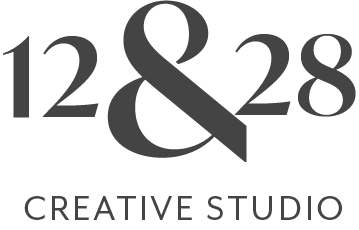4 Key things potential clients are looking for on your website
Picture this: an individual has a need. It could be a problem they are facing that they need a solution to or a question they need an answer to. So they Google it and your website page comes up in the list of results. They click on it.
This individual has become a potential client of yours!
Now replay this scenario in your head multiple times because that is how it plays out in real life too. Potential clients are landing on your website each day (and night!). So are they getting what they came for? Do they find spending time on your website worthwhile? If not, they’re gonna bounce which is not ideal because a high bounce rate tells Google that your website is not credible.
So to avoid that from happening, let’s make sure that your website is prepped and ready to welcome potential clients. A good user experience will leave a lasting impression keeping you top of mind when they’re ready to hire (it could be right that moment or in the near future). The seeds get planted there and then!
I’m breaking down a 4 things checklist of what your potential client is looking for when they land on your website and how you can make sure you’ve got your bases covered. Let’s dive in!
Check out my article on How to confidently sell your premium services online with these 4 tips.
1. Quick Results
That is the very first thing and a super important one as well. According to reports, 40% of users abandon sites that take longer than 3 seconds to load!
In this era, one needs instant gratification. So a slow-loading website could harm your business in many ways than one. A slow-loading website leads to a higher bounce rate as potential clients will move on to the next option pretty quickly. A slow-loading website also impacts your SEO (Search Engine Optimization) score because Google does not want its users to wait to get the results they are looking for. So make sure that your website design allows your web pages to load quickly - both on desktop as well as on mobile, something a good web designer should already know how to do.
Few tips to help you achieve a healthy load time:
Keep your image sizes optimized. Ideally, every image that you add to your website should be under 200 KB. This will ensure they load properly on computers and mobile screens. Use online tools like TinyPng to compress your images without losing quality which is also important for first impressions!
Don’t add unnecessary bits of code and scripts to your website. That makes the website heavy as the code needs to get processed when a web page loads which adds to the overall load time.
Keep your videos optimized just like your images. Use web-friendly formats with compressed videos not more than a few seconds long so that the overall load time is quick.
2. A Connection Point
With minimal time on hand, your web visitors need quick validation that they are in the right place to continue. So they’re essentially looking for a connection point. Whether they land on your website homepage or a blog page - your website copy plays a super important role here. Make sure the titles are relevant, and attractive, and promise to solve a problem that your potential clients are facing.
Also, your website copy should be client-focused. That is what they are interested in and not some jargony self-advertisement which would only make them lose interest in what you’ve got to offer.
3. The Visual Design
Okay, so the site is loaded and the website copy has grabbed the visitor’s attention. What next? This is where visuals pull the user in IF the website is well-designed. Every element of branding design from a professional logo, an aesthetic color palette, and strong typography to high-quality imagery - is responsible for potential clients to get attracted.
A whopping 46% of visitors judge a site’s credibility based on its visual design!
This statistic alone is enough to convey the importance of a professional website design. So remember this is one of the top things your potential clients are looking for when making a decision about who to hire.
The above example shows the visual design for a Chicago-based hairstylist’s website. The overall layout, imagery, colors, and typography combined with good amounts of whitespaces make the experience quite visually pleasing.
If you’ve been looking for a website designer to help you with a strategic and attractive website, book a free discovery call with me!
4. A Good User Experience
This one is an absolute must. If your website is visually appealing and does a good job of hooking a potential client, it still won’t be enough if the overall user experience of your website misses the mark. Just like in the grocery store, having chips beside the bottle of salsa, makes logical sense and offers a good user experience for the shoppers - your website design should treat your visitors in the same way.
What your potential clients are looking for is a good intuitive experience that helps them easily navigate the website and quickly find what they’re looking for without having to struggle to get answers. For more tips on how to achieve a good user experience, check out this article by Medium.
Bonus Website Design Tip!
There’s one thing every potential client wants to see on your website and it is a big factor behind their decision-making process. That thing is your photo! The reason being is that people are looking for a human connection - to see faces and learn stories. So don’t make them struggle to find the human behind the business which is - YOU.
Building brands with strategy + love,
Ridha


